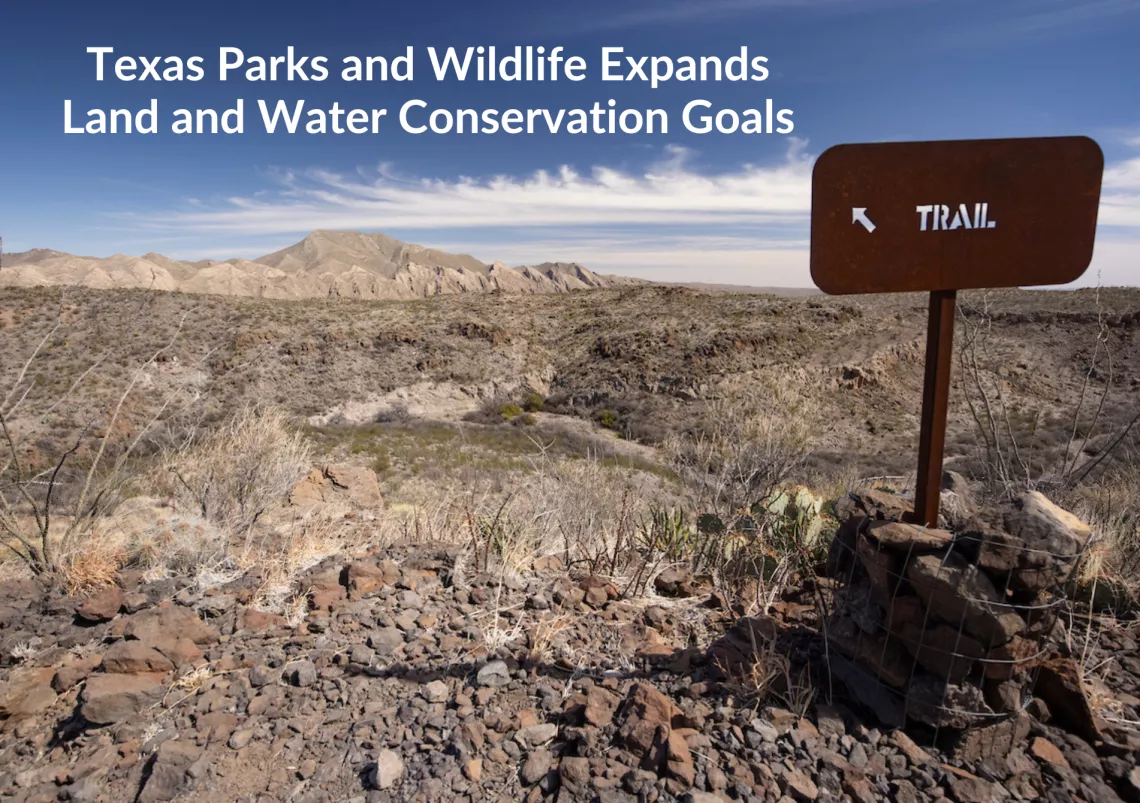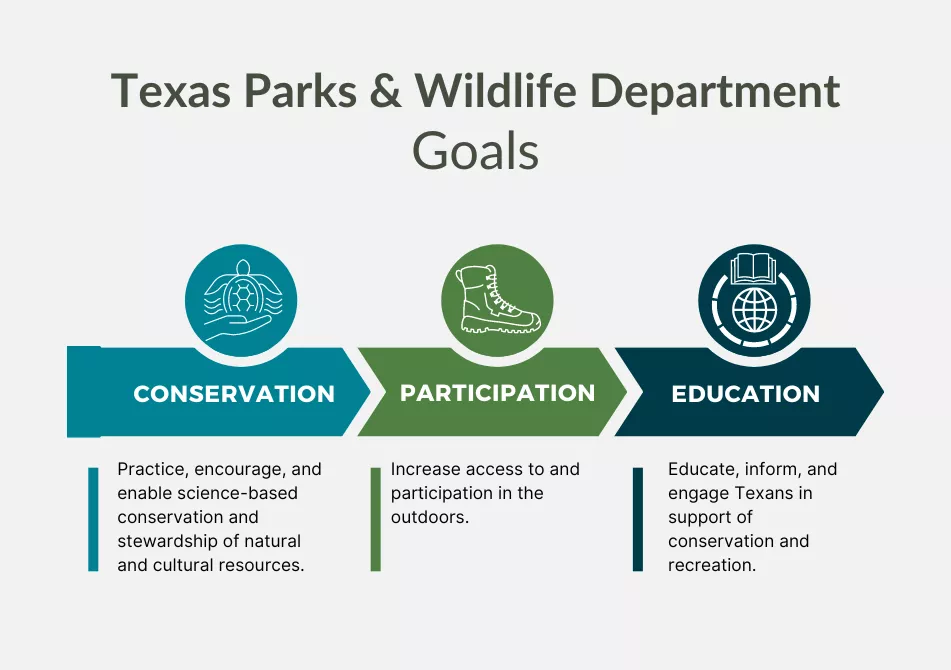
Photo of Fresno Canyon Overlook Trail in Big Bend Ranch State Park courtesy of Al Braden
By Alex Ortiz
The Texas Parks and Wildlife Commission (which oversees the Texas Parks and Wildlife Department, or TPWD) adopted a new version of the Texas Land and Water Resources Conservation and Recreation Plan. This plan is an important guiding document that aids TPWD in making its investment decisions in our state lands as well as prioritizing important cultural heritage sites and the protection of our species of greatest conservation need. The plan includes three main goals and 15 objectives with specific metrics they intend to meet on or before 2033.

While this plan was an update to its existing 2014 Plan, the update is a direct result of work by the Lone Star Chapter of the Sierra Club and many other advocates during the 2019 Sunset process of the TPWD. The Sunset report and subsequent legislation (SB 700 from the 86th Legislative Session) recommended that TPWD refine the scope and measure the effectiveness of its Land and Water Resources Conservation and Recreation Plan and include more concrete objectives and outcome-based performance measures. Likewise, the report found the Land and Water Resources Conservation and Recreation Plan needs to return to its intended statutory purpose, identifying and addressing the state’s resources and needs. The proposed plan — while far from perfect — is an improvement from the previous plan and also incorporates new funding available for the first time.
The Lone Star Chapter submitted substantial comments on the plan, including one that the commission responded to positively! We, along with others like our friends at Texas Living Waters, called for the inclusion of supplementary provisions in the plan that would specifically take into account statewide Proposition 14. Proposition 14 passed, amending the Texas Constitution to create the Centennial Parks Fund and providing $1 billion for park acquisition and maintenance. The passage of Prop 14 means that the commission added 50,000 acres to their land acquisition goals by 2033, increasing the goal from 32,000 acres to 82,000 acres; the commission also included a new action to add 5 new state park system properties by 2033. This major investment in our state parks is a huge boost for our local communities as well as the vulnerable wildlife that call our state lands home.
Of course, we raised other issues too, like that Texas has over 500 impaired stream segments without the Clean Water Act-required pollution controls called Total Maximum Daily Loads (TMDLs). While the TMDL program is the domain of the Texas Commission on Environmental Quality (TCEQ), some of the impairments are specific to causing wildlife or recreational harm, like a lack of dissolved oxygen for aquatic life or too much bacteria that could cause human illness. This backlog of unaddressed impaired waters is something that TPWD could analyze and use to help inform TCEQ on which segments are most in need of protection and rehabilitation. The commission did not end up considering this recommendation.
In addition to analyzing Texas’s most vulnerable waterways, we also suggested that TPWD consider expanding its role in protecting Texas’s cultural heritage through its projects and programming by creating an advisory committee that includes expert academics and indigenous leadership in Texas. Because Texas’s cultural heritage is inextricable from indigenous culture, it’s vital that the indigenous peoples of Texas have input on what stories are told on public lands — and how those stories are told to the future generations of Texans. Unfortunately, the commission did not move forward with this recommendation either.
While the changes in the final version of the plan are absolutely for the better, we will continue to work alongside TPWD in order to ensure that everyone across the state has access to our natural spaces and cultural history, and that Texas’s most vulnerable species have the protections they need to survive. This is not TPWD’s responsibility alone, as other agencies like the Texas Commission on Environmental Quality, which oversees water quality, and the Texas Water Development Board, which can provide funding for water, wastewater and flood control — including preserving land for green infrastructure — can also play a part.